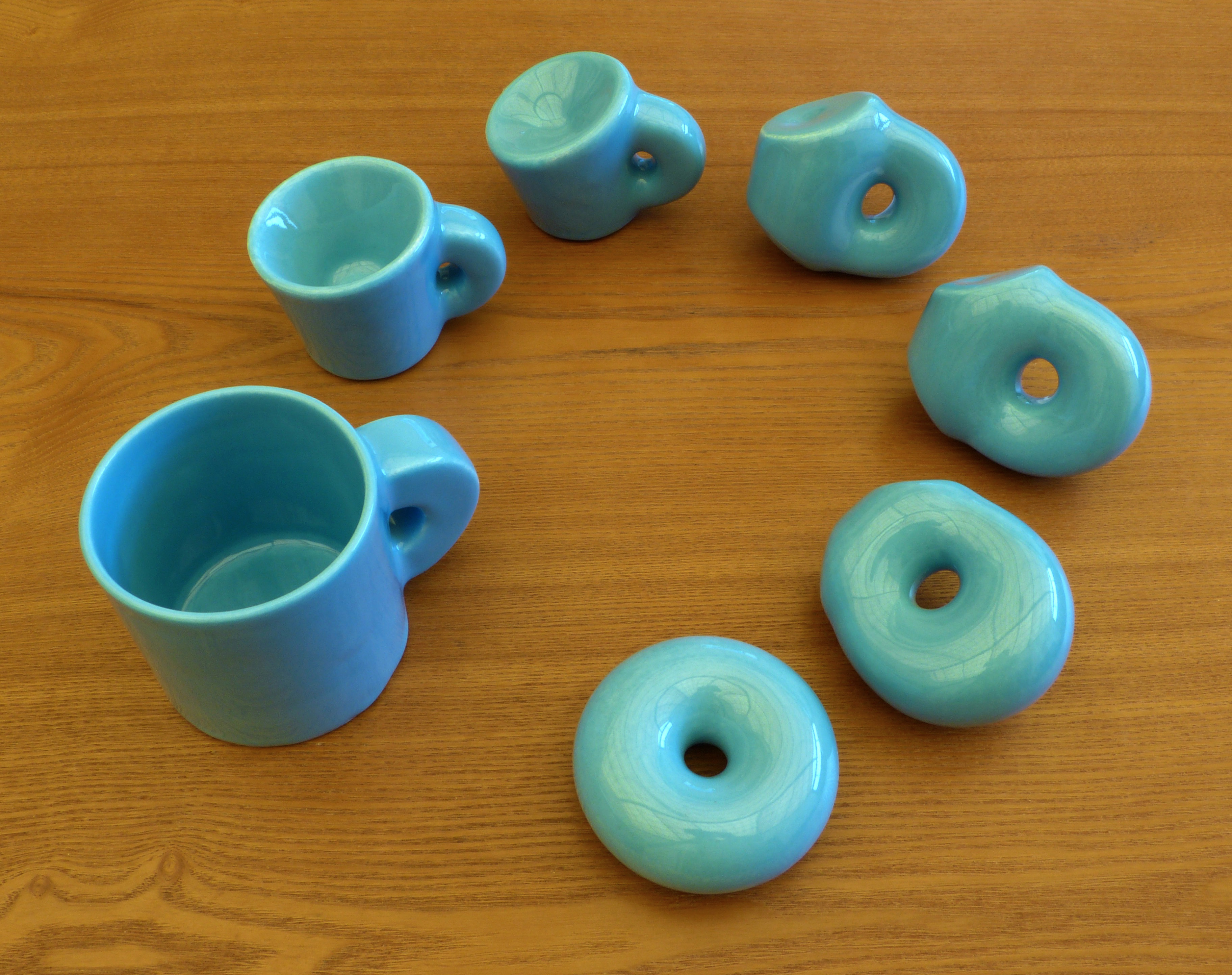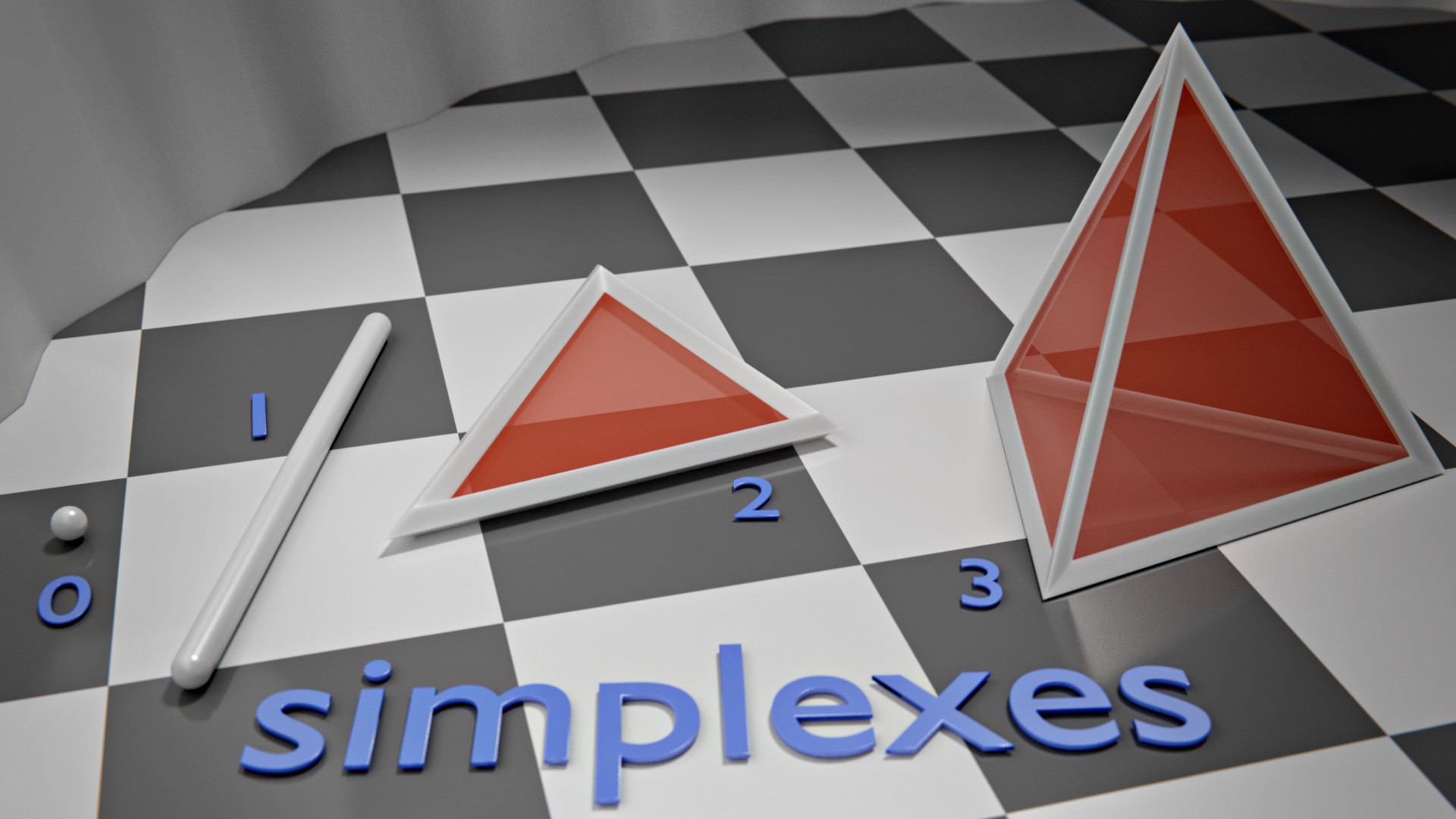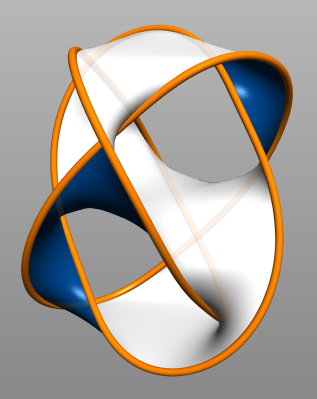|
Pachner Moves
In topology, a branch of mathematics, Pachner moves, named after Udo Pachner, are ways of replacing a triangulation of a piecewise linear manifold by a different triangulation of a homeomorphic manifold. Pachner moves are also called bistellar flips. Any two triangulations of a piecewise linear manifold are related by a finite sequence of Pachner moves. Definition Let \Delta_ be the (n+1)-simplex. \partial \Delta_ is a combinatorial ''n''-sphere with its triangulation as the boundary of the ''n+1''-simplex. Given a triangulated piecewise linear (PL) ''n''-manifold N, and a co-dimension ''0'' subcomplex C \subset N together with a simplicial isomorphism \phi : C \to C' \subset \partial \Delta_, the Pachner move on ''N'' associated to ''C'' is the triangulated manifold (N \setminus C) \cup_\phi (\partial \Delta_ \setminus C'). By design, this manifold is PL-isomorphic to N but the isomorphism does not preserve the triangulation. See also * Flip graph * Unknotting problem ... [...More Info...] [...Related Items...] OR: [Wikipedia] [Google] [Baidu] |
Pachner Move
Pachner is a German surname. Notable people with the surname include: * Lukas Pachner (born 1991), Austrian snowboarder * Paul Pachner (1871–1937), Austro–Hungarian admiral *Valerie Pachner (born 1987), Austrian actress *William Pachner (1915–2017), Czech-born American painter See also *Pachner moves In topology, a branch of mathematics, Pachner moves, named after Udo Pachner, are ways of replacing a triangulation of a piecewise linear manifold by a different triangulation of a homeomorphic manifold. Pachner moves are also called bistellar fl ..., are also called bistellar flips (Geometric topology) {{Surname German-language surnames ... [...More Info...] [...Related Items...] OR: [Wikipedia] [Google] [Baidu] |
Topology
In mathematics, topology (from the Greek words , and ) is concerned with the properties of a geometric object that are preserved under continuous deformations, such as stretching, twisting, crumpling, and bending; that is, without closing holes, opening holes, tearing, gluing, or passing through itself. A topological space is a set endowed with a structure, called a ''topology'', which allows defining continuous deformation of subspaces, and, more generally, all kinds of continuity. Euclidean spaces, and, more generally, metric spaces are examples of a topological space, as any distance or metric defines a topology. The deformations that are considered in topology are homeomorphisms and homotopies. A property that is invariant under such deformations is a topological property. Basic examples of topological properties are: the dimension, which allows distinguishing between a line and a surface; compactness, which allows distinguishing between a line and a circle; connectedne ... [...More Info...] [...Related Items...] OR: [Wikipedia] [Google] [Baidu] |
Triangulation (topology)
In mathematics, triangulation describes the replacement of topological spaces by piecewise linear spaces, i.e. the choice of a homeomorphism in a suitable simplicial complex. Spaces being homeomorphic to a simplicial complex are called triangulable. Triangulation has various uses in different branches of mathematics, for instance in algebraic topology, in complex analysis or in modeling. Motivation On the one hand, it is sometimes useful to forget about superfluous information of topological spaces: The replacement of the original spaces with simplicial complexes may help to recognize crucial properties and to gain a better understanding of the considered object. On the other hand, simplicial complexes are objects of combinatorial character and therefore one can assign them quantities rising from their combinatorial pattern, for instance, the Euler characteristic. Triangulation allows now to assign such quantities to topological spaces. Investigations concerning the e ... [...More Info...] [...Related Items...] OR: [Wikipedia] [Google] [Baidu] |
Piecewise Linear Manifold
In mathematics, a piecewise linear (PL) manifold is a topological manifold together with a piecewise linear structure on it. Such a structure can be defined by means of an atlas, such that one can pass from chart to chart in it by piecewise linear functions. This is slightly stronger than the topological notion of a triangulation. An isomorphism of PL manifolds is called a PL homeomorphism. Relation to other categories of manifolds PL, or more precisely PDIFF, sits between DIFF (the category of smooth manifolds) and TOP (the category of topological manifolds): it is categorically "better behaved" than DIFF — for example, the Generalized Poincaré conjecture is true in PL (with the possible exception of dimension 4, where it is equivalent to DIFF), but is false generally in DIFF — but is "worse behaved" than TOP, as elaborated in surgery theory. Smooth manifolds Smooth manifolds have canonical PL structures — they are uniquely ''triangulizable,'' by Whitehead's theore ... [...More Info...] [...Related Items...] OR: [Wikipedia] [Google] [Baidu] |
Homeomorphism
In the mathematical field of topology, a homeomorphism, topological isomorphism, or bicontinuous function is a bijective and continuous function between topological spaces that has a continuous inverse function. Homeomorphisms are the isomorphisms in the category of topological spaces—that is, they are the mappings that preserve all the topological properties of a given space. Two spaces with a homeomorphism between them are called homeomorphic, and from a topological viewpoint they are the same. The word ''homeomorphism'' comes from the Greek words '' ὅμοιος'' (''homoios'') = similar or same and '' μορφή'' (''morphē'') = shape or form, introduced to mathematics by Henri Poincaré in 1895. Very roughly speaking, a topological space is a geometric object, and the homeomorphism is a continuous stretching and bending of the object into a new shape. Thus, a square and a circle are homeomorphic to each other, but a sphere and a torus are not. However, this ... [...More Info...] [...Related Items...] OR: [Wikipedia] [Google] [Baidu] |
Simplex
In geometry, a simplex (plural: simplexes or simplices) is a generalization of the notion of a triangle or tetrahedron to arbitrary dimensions. The simplex is so-named because it represents the simplest possible polytope in any given dimension. For example, * a 0-dimensional simplex is a point, * a 1-dimensional simplex is a line segment, * a 2-dimensional simplex is a triangle, * a 3-dimensional simplex is a tetrahedron, and * a 4-dimensional simplex is a 5-cell. Specifically, a ''k''-simplex is a ''k''-dimensional polytope which is the convex hull of its ''k'' + 1 vertices. More formally, suppose the ''k'' + 1 points u_0, \dots, u_k \in \mathbb^ are affinely independent, which means u_1 - u_0,\dots, u_k-u_0 are linearly independent. Then, the simplex determined by them is the set of points : C = \left\ This representation in terms of weighted vertices is known as the barycentric coordinate system. A regular simplex is a simplex that is also a regular po ... [...More Info...] [...Related Items...] OR: [Wikipedia] [Google] [Baidu] |
Flip Graph
In mathematics, a flip graph is a graph whose vertices are combinatorial or geometric objects, and whose edges link two of these objects when they can be obtained from one another by an elementary operation called a flip. Flip graphs are special cases of geometric graphs. Among noticeable flip graphs, one finds the 1-skeleton of polytopes such as associahedra or cyclohedra. Examples A prototypical flip graph is that of a convex n-gon \pi. The vertices of this graph are the triangulations of \pi, and two triangulations are adjacent in it whenever they differ by a single interior edge. In this case, the flip operation consists in exchanging the diagonals of a convex quadrilateral. These diagonals are the interior edges by which two triangulations adjacent in the flip graph differ. The resulting flip graph is both the Hasse diagram of the Tamari lattice and the 1-skeleton of the (n-3)-dimensional associahedron. This basic construction can be generalized in a number of w ... [...More Info...] [...Related Items...] OR: [Wikipedia] [Google] [Baidu] |
Unknotting Problem
In mathematics, the unknotting problem is the problem of algorithmically recognizing the unknot, given some representation of a knot, e.g., a knot diagram. There are several types of unknotting algorithms. A major unresolved challenge is to determine if the problem admits a polynomial time algorithm; that is, whether the problem lies in the complexity class P. Computational complexity First steps toward determining the computational complexity were undertaken in proving that the problem is in larger complexity classes, which contain the class P. By using normal surfaces to describe the Seifert surfaces of a given knot, showed that the unknotting problem is in the complexity class NP. claimed the weaker result that unknotting is in AM ∩ co-AM; however, later they retracted this claim. In 2011, Greg Kuperberg proved that (assuming the generalized Riemann hypothesis) the unknotting problem is in co-NP, and in 2016, Marc Lackenby provided an unconditional p ... [...More Info...] [...Related Items...] OR: [Wikipedia] [Google] [Baidu] |
European Journal Of Combinatorics
European, or Europeans, or Europeneans, may refer to: In general * ''European'', an adjective referring to something of, from, or related to Europe ** Ethnic groups in Europe ** Demographics of Europe ** European cuisine European cuisine comprises the cuisines of Europe "European Cuisine." [...More Info...] [...Related Items...] OR: [Wikipedia] [Google] [Baidu] |
Topology
In mathematics, topology (from the Greek words , and ) is concerned with the properties of a geometric object that are preserved under continuous deformations, such as stretching, twisting, crumpling, and bending; that is, without closing holes, opening holes, tearing, gluing, or passing through itself. A topological space is a set endowed with a structure, called a ''topology'', which allows defining continuous deformation of subspaces, and, more generally, all kinds of continuity. Euclidean spaces, and, more generally, metric spaces are examples of a topological space, as any distance or metric defines a topology. The deformations that are considered in topology are homeomorphisms and homotopies. A property that is invariant under such deformations is a topological property. Basic examples of topological properties are: the dimension, which allows distinguishing between a line and a surface; compactness, which allows distinguishing between a line and a circle; connectedne ... [...More Info...] [...Related Items...] OR: [Wikipedia] [Google] [Baidu] |
Geometric Topology
In mathematics, geometric topology is the study of manifolds and maps between them, particularly embeddings of one manifold into another. History Geometric topology as an area distinct from algebraic topology may be said to have originated in the 1935 classification of lens spaces by Reidemeister torsion, which required distinguishing spaces that are homotopy equivalent but not homeomorphic. This was the origin of ''simple'' homotopy theory. The use of the term geometric topology to describe these seems to have originated rather recently. Differences between low-dimensional and high-dimensional topology Manifolds differ radically in behavior in high and low dimension. High-dimensional topology refers to manifolds of dimension 5 and above, or in relative terms, embeddings in codimension 3 and above. Low-dimensional topology is concerned with questions in dimensions up to 4, or embeddings in codimension up to 2. Dimension 4 is special, in that in some respects (topo ... [...More Info...] [...Related Items...] OR: [Wikipedia] [Google] [Baidu] |




